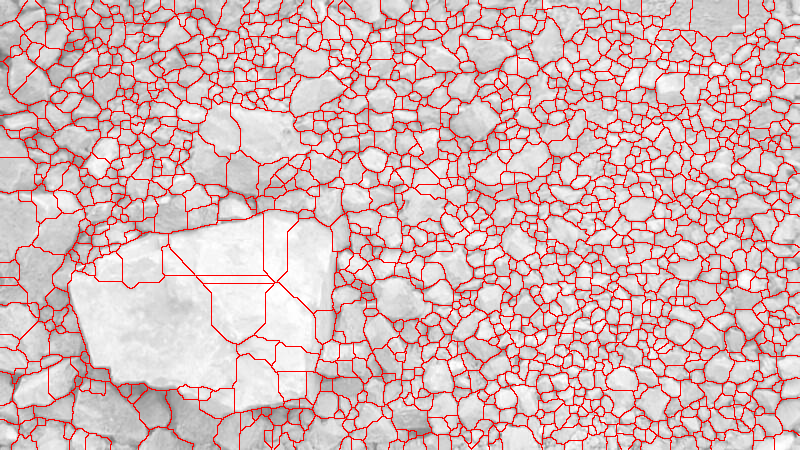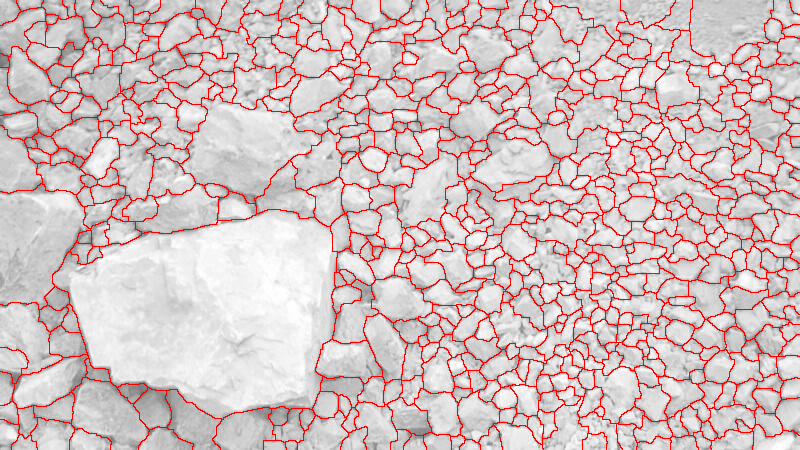Detection and segmentation of rocks is an important task in many application areas including geological engineering, planetary science, oil exploration, and mining processes. In mining and aggregate industries it is important to measure the size distribution of rock particles to monitor the blasting quality, optimize the blast design, and reduce costs and environmental impact. Rock shape, weathering, and dispersion carry important information about environmental characteristics that need to be identified for efficient route planning in planetary science. By automatically detecting and classifying rocks, rovers can efficiently survey an area, summarize results and concentrate on unusual discoveries, thus maximizing the scientific return. Similar techniques can be used in natural settings on land and under water where characterization of context is important to robot behavior.
In the mining industry, particle size distributions are typically
measured by using sieves, cyclones and sedimentation
techniques. These methods are not only time consuming and
expensive, but also do not provide information that can be
used for online control or process improvement. Image
analysis is becoming increasingly attractive as the cost of
computation continuous to decrease, and with it, the
implementation of machine vision systems for rock size
analysis is becoming more feasible.


 (a)Original Image. (b) Superpixels. (c) Final Segmented Image.
(a)Original Image. (b) Superpixels. (c) Final Segmented Image.
Figure 1: Various steps of the image segmentation algorithm.
In order to estimate the particle size distribution accurately, it is required to detect and segment rock particles of different sizes separately in the rock images. Additionally we also need to classify the rock particles from the background soil present within the images. In this work we employ a two step process to detect and segment the rock particles. In the first step the number of primitives in the image are reduced by grouping spatially coherent pixels to form meaningful homogeneous regions known as superpixels. We then use region merging in the second step to combine the oversegmented superpixels into different rock regions to obtain the final segmentation of the whole image. Once the image has been segmented, we use standard classification techniques to classify the foreground rock particles from the background soil. Once we obtain the rock particles of different sizes we estimate the rock particle size distribution. Fig. 1 above shows the image after various steps of the segmentation algorithm for a sample rock image.
Publications:
-
Sree Ramya S. P. Malladi, Sundaresh Ram, and Jeffrey J. Rodriguez, "Superpixels Using Morphology for Rock Image Segmentation," in
2014 IEEE Southwest Symp. on Image Analysis and Interpretation, April 6-8, 2014, San Diego, CA, pp. 145-8. [ PDF ]
